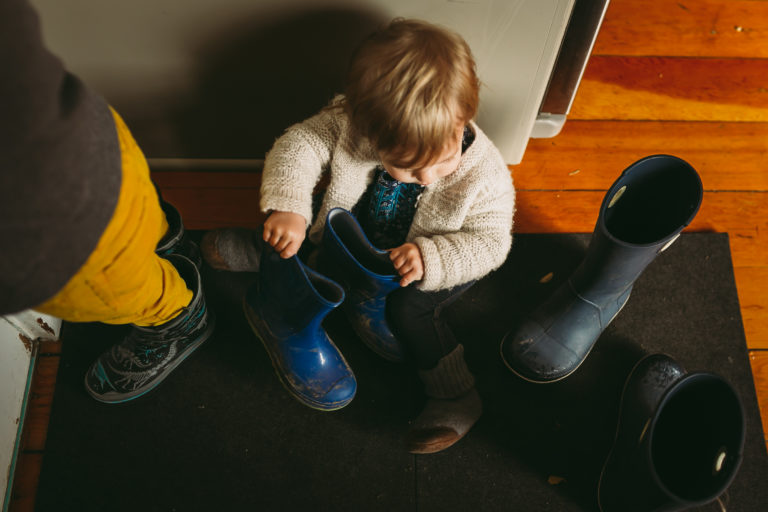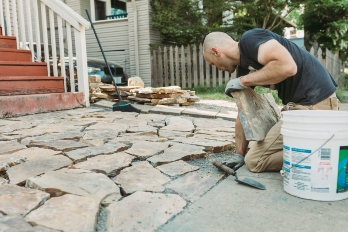Ask any home maintenance expert about the biggest risks to your home, chances are they’ll say: “Water.” When it comes to preventing water damage, we tend to think about water in its liquid form. We imagine a broken pipe or a leaking roof. But what about ice and snow?
As the temperatures drop and we proceed into the depths of winter, our attention turns to the impacts of water in its solid form. Without the proper attention, snow and ice can do a number on your home.
Here’s a list of common issues caused by snow and ice, and what to do about them:
Ice dams
Ice dams are thick ridges of ice that form at the edge of your roof. They’re created when heat from inside your home melts snow on your roof. Melted snow drips down to the roof edge and freezes again … and voila! Ice dams form.
Ice dams can damage your roof cover (shingles, slates, shakes, etc.) and cause water leaks that lead to rot and mold. They can also fall and damage your home or injure people. Before you go knock them down, you may want to think about hiring a pro. Removing ice dams can damage your roof, and trying to climb ladders or walk on your roof while it’s icy can lead to serious falls.
Prevention is the best way to deal with ice dams. Usually, the problem comes from an insulation issue. To prevent ice dams, you need to keep your roof below 32 degrees, which limits snowmelt and refreezing. Along with bulking up attic insulation, removing snow from your roof and installing heat cables to melt ice at the edge of your roof can also help.
Detached gutters
Gutters aren’t designed to hold the weight of snow and ice. Extra weight can pull them away from your roof, and even bring them to the ground. Detached gutters often trap water against your roof edge, which can cause rot. And dripping water can lead to siding and foundation issues.
Maintenance is key to preventing gutter damage. Debris remaining from the summer or fall can trap water in your gutters. That water and debris freezes when temperatures drop, causing ice build up over time. Eventually, the weight becomes too much for your poor gutters to bear.
In the spring, assess the winter damage. If your gutters are detached from your roof edge, reattach them securely.
Cracked concrete and brick
Even concrete and brick are no match for ice. As porous building materials, they take in water and hold onto it. When the water freezes it can cause cracking or flaking (aka spalling).
Most cracks or flaking aren’t an emergency. If the crack is wider than 1/8 inch or if flaking is deeper than 1/8 inch, have a professional take a look. With brick, be especially aware of step pattern cracks or bricks that are cracked all the way through.
Fill small cracks in concrete using a simple patching compound found at any hardware store. Filling can prevent worsening over time as more water penetrates the concrete. To prevent the water from penetrating the concrete or brick in the first place, try sealant. Experts recommend reapplying sealant every 4-5 years.
Broken tree limbs
The weight of ice and snow can crack limbs and cause them to fall. While it’s unfortunate for your trees, it’s especially dangerous if branches fall on or near your home or utility lines.
Do some tree maintenance before the threat of ice and snow arrives. Look for damaged, dead, or otherwise weakened branches and take them down. Also, remove branches that hang over your home. No matter how strong they look, if they fall, they can do costly damage to your roof, roof structure, and siding.
To address branches near power lines, call your utility company. They’ll likely do the work for you. If not, hire a professional. DIY tree work around power lines can be dangerous.
Damaged HVAC equipment
If you have a heat pump, central air system, or ductless mini-split system, you likely have some equipment outside of your home. While this equipment is built to withstand the weather, extreme amounts of ice and snow can cause damage. Plus, they likely aren’t designed to withstand the force of ice or snow falling off your roof.
Protect your HVAC units by removing leaves or debris before winter. After snowstorms, dig your units out and clean off the tops. Also, make sure vents aren’t blocked by piles of snow. Blocked vents can send dangerous fumes back into your home.
Hardware stores also sell covers for outdoor HVAC units. And If you’re looking to solve the problem of falling snow and ice all together, an awning can protect your unit from snow and ice falling from the roof. Just make sure you give your unit plenty of room to do its job. Pros recommend three feet of clearance for any awning above the unit.






